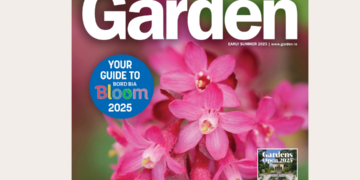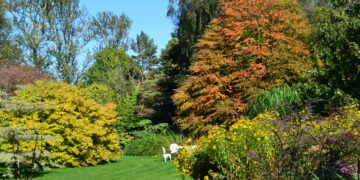In their latest column, Nuala Doherty and Conall O’Caoimh tell us about taking cuttings from perennial salvias, planting bee-friendly veronicastrums and checking for blackflies.
Perennial salvias arrive like the cavalry to boost the late summer border. The exotic-looking Salvia confertiflora, sometimes known as red velvet sage, is a striking choice.

Originating from Brazil, this is a tall, strong almost shrubby plant, with lush, dark green, aromatic foliage on upright stems. From mid-summer to the first frosts, it produces rich orange-red, velvety flower spikes on red stems that rise to over a metre tall.
Grow it on a sunny or lightly shaded, sheltered spot in moisture-rich soil. It is a versatile, trouble-free plant, at home in the herbaceous border with other Mediterranean planting or among exotics.
This is a tender perennial, but well worth the effort of growing, and should be overwintered in a first free greenhouse or conservatory. We propagate it from cuttings, taken in late summer, to have a smaller plant to mind through the winter.
Top tips
As summer progresses, many plants will need staking to keep looking good and able to withstand any August winds.
Check regularly for blackflies on the flower stems of dahlias. They are sucking our sugars. Remove by hand, or spray with a soup of garlic and a little washing-up liquid.
Make a list of star plants from which to collect seeds. When the seedhead is brown and dry, the seed is ready for collecting.
During August, clip conifer hedges, like yew or cypress, taking care to check ahead for any active nests. Taper the hedges so it is narrower at the top, allowing light to reach the lower parts.
For the full article and lots more on salvias and checks for your garden read Nuala and Conall’s column in our Late Summer Issue, or subscribe now.












